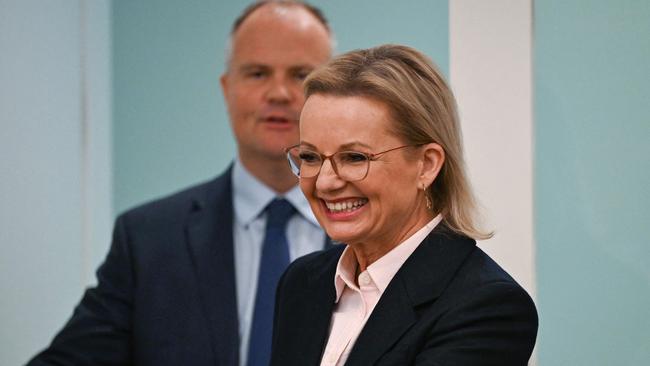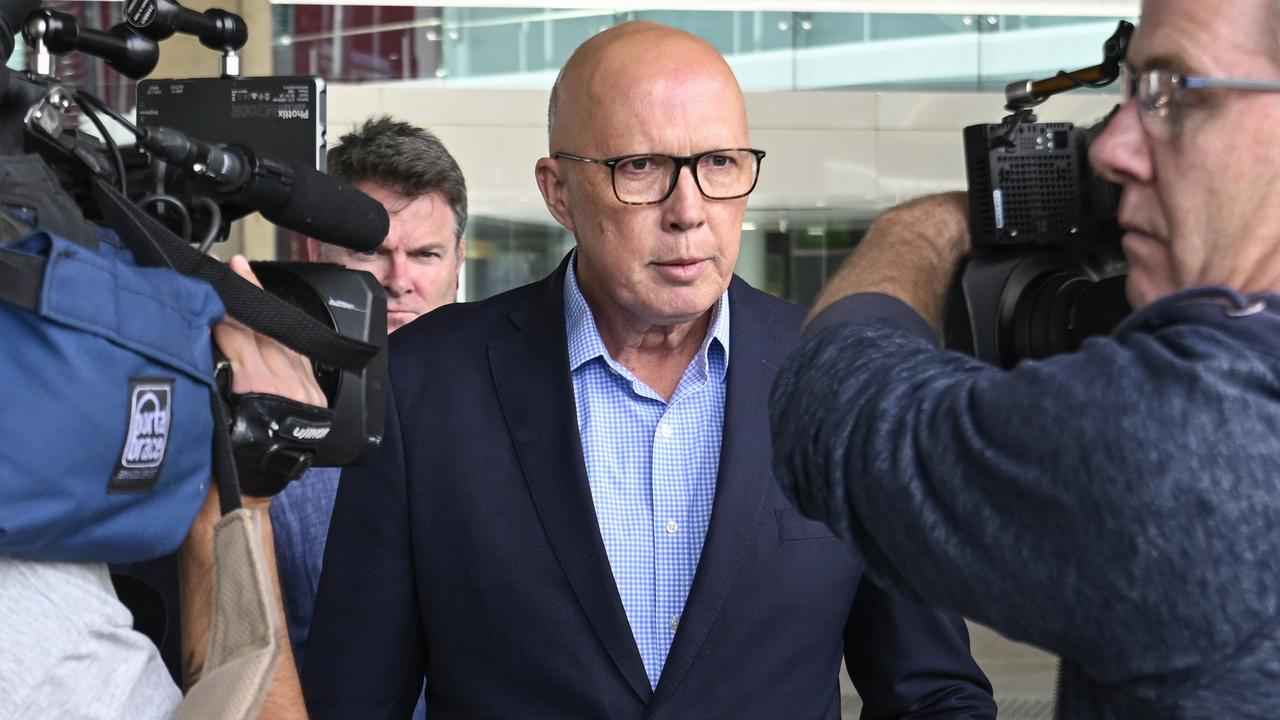Editorial: Uniting the Liberals will be no Ley down misere
Sussan Ley’s key challenge will be to unite the party after a leadership ballot she won by only four votes, writes the editor.

Analysis
Don't miss out on the headlines from Analysis. Followed categories will be added to My News.
Last Monday, in the wake of the Coalition’s shattering election wipe-out, we said in this column that the next federal Liberal Party leader would need to embrace the centre of politics if they were to be competitive at the next federal election in three years from now.
We referred to a truism of Australian politics: that elections are won in the centre, not at the extremes – such as may be the case in the United States and in other democracies where voting is not compulsory like it is here.
We also referenced Liberal Party founder Sir Robert Menzies’s 1942 “Forgotten People” speech that framed the party as one that would support the nation’s vast middle class in their individual endeavours – and we concluded: “Governing from the centre must be the light on the hill for any leaders in Australia’s great democracy. This is the core second-term challenge for the Prime Minister, and for the next leader of the Liberal Party.”
Which brings us to Sussan Ley, who yesterday won that job – becoming the first woman to be elected leader of the Liberal Party.
Her victory was a narrow one, against the conservative “dream team” of Angus Taylor and Jacinta Nampijimpa Price, and Ms Ley’s victory drew the ire of some from the Right.
Unsurprisingly, Ms Ley was reluctant to nail her colours to the mast so soon after her victory. But she did sell herself as a moderate, rightly noting that government is always formed in the sensible centre, and challenged her party to reflect, respect and represent modern Australia.
She also vowed there would not be a climate war under her leadership, saying the Coalition’s energy policy would be up for review, and talked about solutions not bogged down by Left or Right ideology. Ms Ley said: “We have to start from the position of affordable, reliable baseload power. Remember that our competitive advantage in manufacturing in this country has always been built on energy, and we need to remember that.”
It will be a hell of job. She will have by her side as deputy Sunshine Coast MP Ted O’Brien, who was the architect of the nuclear policy. Some say the pair are just keeping the seat warm for the party’s next leadership team. We will see. Politics is a funny game.
Ms Ley’s key challenge will be to unite the party after a leadership ballot she won by only four votes, 29 to 25. She also needs to restore the Liberal Party’s credibility – and it was good to hear her acknowledge the reality of its situation by saying: “We stood across polling booths across this country and saw the look on people’s faces as they came in, sadly, not to vote for us – they felt disappointed and let down.”
It was welcome that Mr Taylor and Senator Price pledged their support for the new leader. Every member of the Coalition party room will need to be energised and working at their capacity if they are to present themselves as an alternative government in 2028.
Labor won 93 seats, with the Coalition just 42 (three seats are still undecided). It was a demolition in terms of numbers in the parliament. But Labor did so while attracting just 34.7 per cent of first preference votes – not exactly the massive mandate for change that some of the Labor backslappers think it is.
It will be up to Ms Ley and her leadership team to not let the government have it all its own way. At the same time they need to steadily develop a suite of policies well ahead of the next campaign that do more than just excite the conservative Liberal and National Party base. They also need to appeal to younger voters and women.
It is a big job. For our democracy’s sake, we wish Ms Ley well.
OUR BOOMING REGIONS
Queensland’s claim as Australia’s most decentralised state is only getting stronger. While other states have a capital and “the bush”, Queensland boasts large urban centres outside of Brisbane – and everyone wants to move there.
As we reveal today, a survey of 41,000 family moves across Australia over the past six years has revealed regional Queensland has the highest inbound-to-outbound ratio in the country.
For every family that leaves a regional Queensland town, 2.48 families move in.
Unsurprisingly the Sunshine Coast tops the list, with 3.28 families arriving for every one that leaves. Wide Bay, Cairns, Central Queensland and the Gold Coast are also attracting families.
Of course, we know the reasons why. Queensland’s weather and lifestyle is the envy of the nation, and compared with Australia’s state capitals, our regional centres offer relatively affordable housing combined with all the services people expect.
Of course, it’s up to the state government to ensure those services keep up with the rapidly expanding population.
And that challenge is only going to get harder.
Responsibility for election comment is taken by Chris Jones, corner of Mayne Rd & Campbell St, Bowen Hills, Qld 4006. Printed and published by NEWSQUEENSLAND (ACN 009 661 778). Contact details here
Originally published as Editorial: Uniting the Liberals will be no Ley down misere




